1993 Porsche 911 Type 964 Turbo S 'Leichtbau' Coupé Chassis no. WP0ZZZ96ZPS479056 •One of only 86 produced •Delivered new to Switzerland •Two owners •Only 14,600 kilometres from new •Sought-after options: wind-up windows, no airbag •Certificate of Authenticity Fußnoten 'The new engine turned out to have enormous marketing power. It became a real status symbol to have that little word 'turbo' on your rear deck, and this fashion spread right across the motor industry.' - Peter Morgan, 'Original Porsche 911'. Much of the Porsche 911's development had resulted from the factory's racing programme, and it was the then Group 4 homologation rules, which required 400 road cars to be built, which spurred the development of 'Project 930' - the legendary 911 Turbo. In production from April 1975, the Turbo married a KKK turbocharger to the 3.0-litre RSR engine, in road trim a combination that delivered 260bhp for a top speed of 250km/h. But the Turbo wasn't just about top speed, it was also the best-equipped 911 and amazingly flexible - hence only four speeds in the gearbox - being capable of racing from a standstill to 62km/h in 14 seconds. The Turbo's characteristic flared wheelarches and 'tea tray' rear spoiler had already been seen on the Carrera model, while the interior was the most luxurious yet seen in a 911, featuring leather upholstery, air conditioning and electric windows. The Turbo's engine was enlarged to 3.3 litres for 1978, gaining an inter-cooler in the process; power increased to 300bhp and the top speed of what was the fastest-accelerating road car of its day went up to 260km/h. More refined than hitherto yet retaining its high performance edge, the Turbo sold in the thousands, becoming the definitive sports car of its age. When Porsche revealed that the original 911 would be replaced by the new Type 964 in 1990, dealer stocks of the existing Turbo model sold out overnight. Representing a major step forward for the 911, the new Carrera 4 and Carrera 2 - coded named '964' - were launched in 1989, the former marking the first time that four-wheel drive had been seen on a series-production 911. Porsche had experimented with four-wheel drive on the 959 supercar, and many of the lessons learned from the latter influenced the design of the 964's chassis and suspension. Face-lifted but retaining that familiar shape, the Carreras had been given a more extensive work-over mechanically, 87% of parts being claimed as entirely new. Although the normally aspirated duo shared the same 3.6-litre, 247bhp, flat-six engine, the Turbo initially kept its existing 3.3-litre unit, which now developed 320bhp. Power-assisted steering (another 911 'first'), anti-lock brakes, and a five-speed manual transmission were standard, with the Tiptronic auto 'box a Carrera 2-only option. In May 1992 Porsche announced a special limited-edition version of the Type 964 Turbo: the 'Turbo S Leichtbau' (light build). Some 25-50 units were planned, though this was later increased to 80. As its nomenclature suggests, this new model was intended to be both more powerful and lighter than the stock Turbo, as well as offering enhanced handling and subtle re-styling. The engine changes raised the maximum output by 61bhp. "With different camshafts, precision-machined intake ducts, slightly higher charge pressure and an optimised ignition and fuel injection system, this six-cylinder engine was capable of producing 381bhp," explained Porsche. "To deliver all that power to the road surface safely, the car was lowered by 40 millimetres and the running gear was given firmer settings." The 'Leichtbau' requirement was achieved by deleting the under-body protection, soundproofing, air conditioning, power steering and rear seats, while further savings came from thinner glass, aluminium doors, a carbon-fibre luggage compartment and thinner carpets, the result being a reduction of 180kg over the standard Turbo. Production of the Turbo S Leichtbau began in July 1992 for the 1993
1993 Porsche 911 Type 964 Turbo S 'Leichtbau' Coupé Chassis no. WP0ZZZ96ZPS479056 •One of only 86 produced •Delivered new to Switzerland •Two owners •Only 14,600 kilometres from new •Sought-after options: wind-up windows, no airbag •Certificate of Authenticity Fußnoten 'The new engine turned out to have enormous marketing power. It became a real status symbol to have that little word 'turbo' on your rear deck, and this fashion spread right across the motor industry.' - Peter Morgan, 'Original Porsche 911'. Much of the Porsche 911's development had resulted from the factory's racing programme, and it was the then Group 4 homologation rules, which required 400 road cars to be built, which spurred the development of 'Project 930' - the legendary 911 Turbo. In production from April 1975, the Turbo married a KKK turbocharger to the 3.0-litre RSR engine, in road trim a combination that delivered 260bhp for a top speed of 250km/h. But the Turbo wasn't just about top speed, it was also the best-equipped 911 and amazingly flexible - hence only four speeds in the gearbox - being capable of racing from a standstill to 62km/h in 14 seconds. The Turbo's characteristic flared wheelarches and 'tea tray' rear spoiler had already been seen on the Carrera model, while the interior was the most luxurious yet seen in a 911, featuring leather upholstery, air conditioning and electric windows. The Turbo's engine was enlarged to 3.3 litres for 1978, gaining an inter-cooler in the process; power increased to 300bhp and the top speed of what was the fastest-accelerating road car of its day went up to 260km/h. More refined than hitherto yet retaining its high performance edge, the Turbo sold in the thousands, becoming the definitive sports car of its age. When Porsche revealed that the original 911 would be replaced by the new Type 964 in 1990, dealer stocks of the existing Turbo model sold out overnight. Representing a major step forward for the 911, the new Carrera 4 and Carrera 2 - coded named '964' - were launched in 1989, the former marking the first time that four-wheel drive had been seen on a series-production 911. Porsche had experimented with four-wheel drive on the 959 supercar, and many of the lessons learned from the latter influenced the design of the 964's chassis and suspension. Face-lifted but retaining that familiar shape, the Carreras had been given a more extensive work-over mechanically, 87% of parts being claimed as entirely new. Although the normally aspirated duo shared the same 3.6-litre, 247bhp, flat-six engine, the Turbo initially kept its existing 3.3-litre unit, which now developed 320bhp. Power-assisted steering (another 911 'first'), anti-lock brakes, and a five-speed manual transmission were standard, with the Tiptronic auto 'box a Carrera 2-only option. In May 1992 Porsche announced a special limited-edition version of the Type 964 Turbo: the 'Turbo S Leichtbau' (light build). Some 25-50 units were planned, though this was later increased to 80. As its nomenclature suggests, this new model was intended to be both more powerful and lighter than the stock Turbo, as well as offering enhanced handling and subtle re-styling. The engine changes raised the maximum output by 61bhp. "With different camshafts, precision-machined intake ducts, slightly higher charge pressure and an optimised ignition and fuel injection system, this six-cylinder engine was capable of producing 381bhp," explained Porsche. "To deliver all that power to the road surface safely, the car was lowered by 40 millimetres and the running gear was given firmer settings." The 'Leichtbau' requirement was achieved by deleting the under-body protection, soundproofing, air conditioning, power steering and rear seats, while further savings came from thinner glass, aluminium doors, a carbon-fibre luggage compartment and thinner carpets, the result being a reduction of 180kg over the standard Turbo. Production of the Turbo S Leichtbau began in July 1992 for the 1993


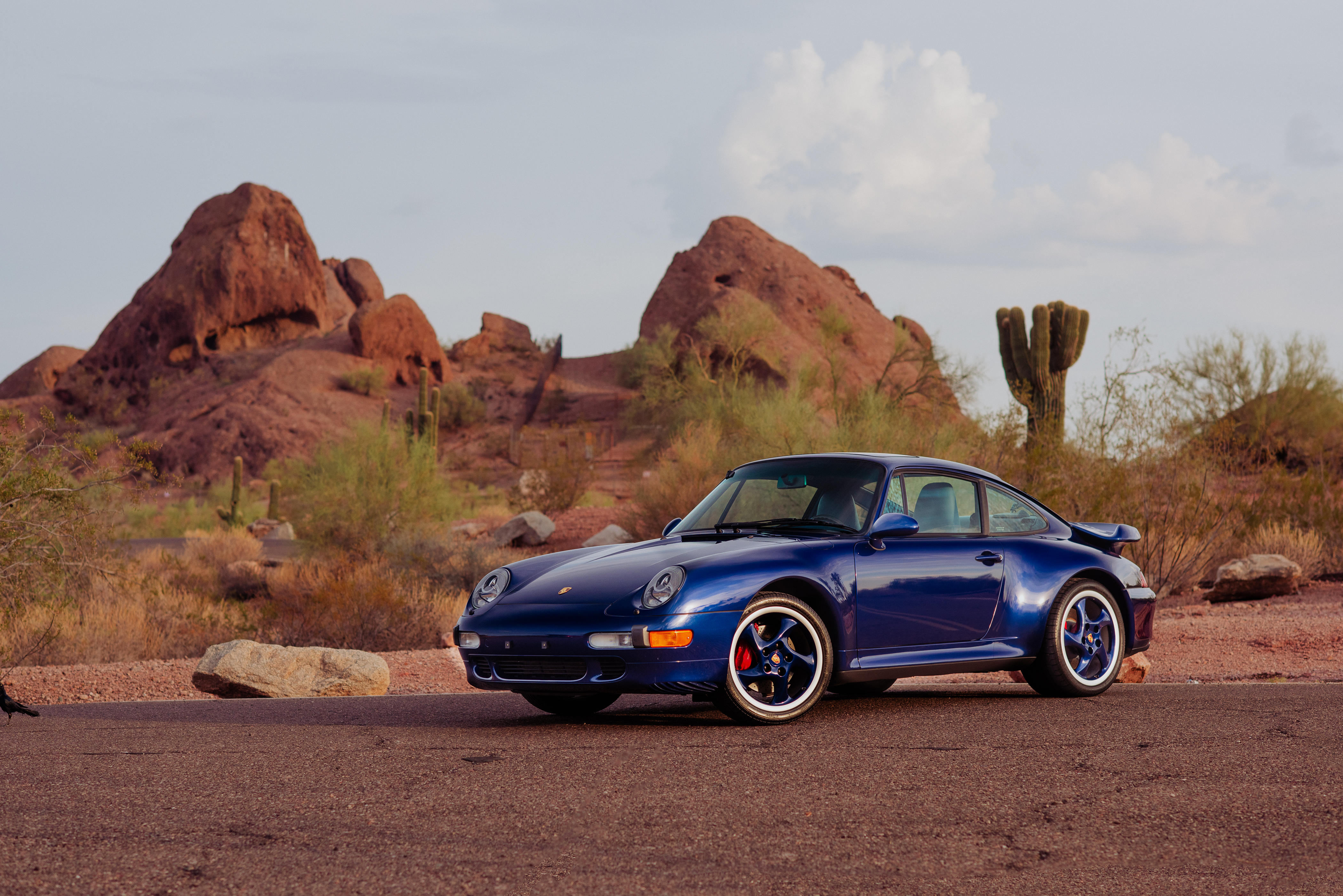
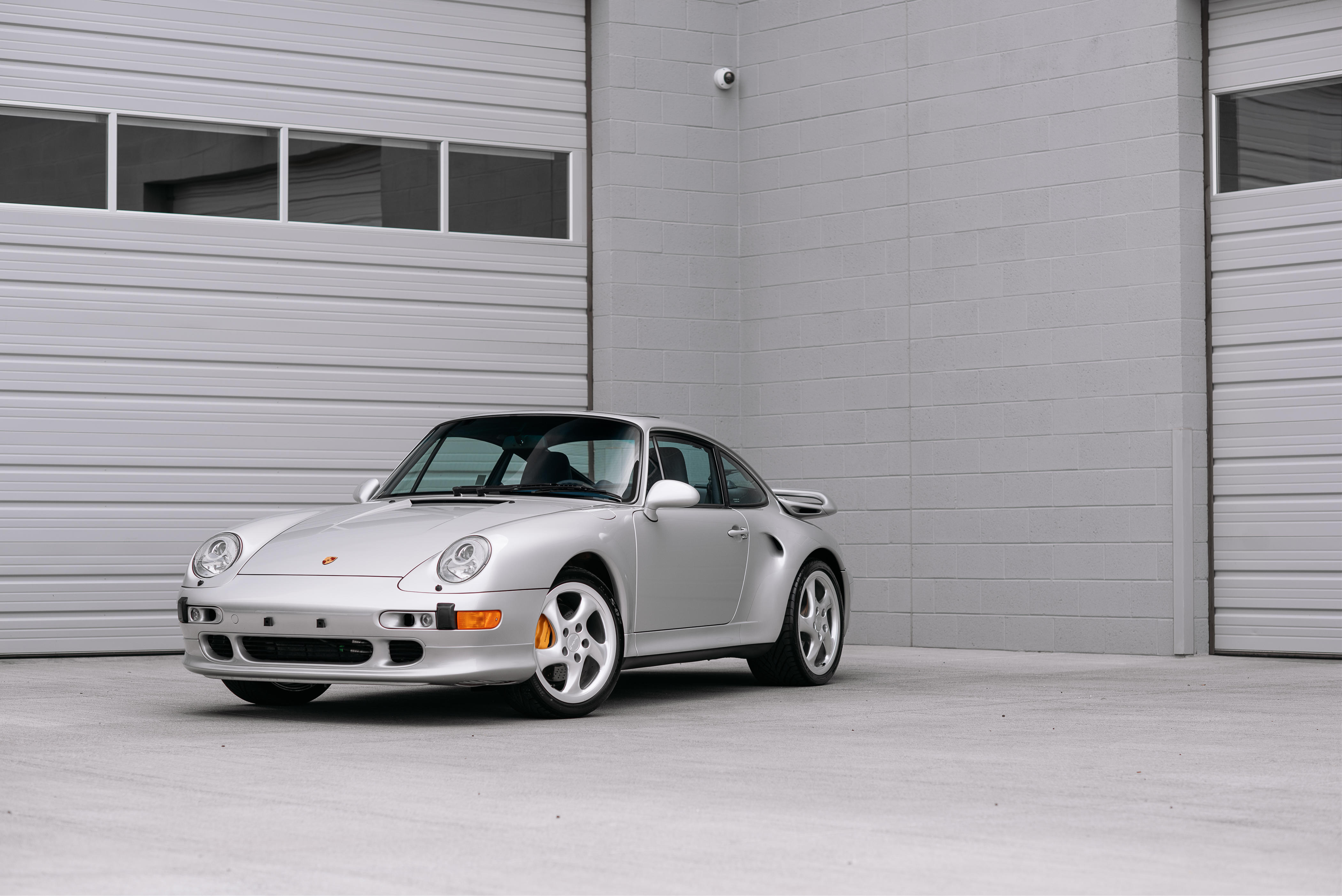
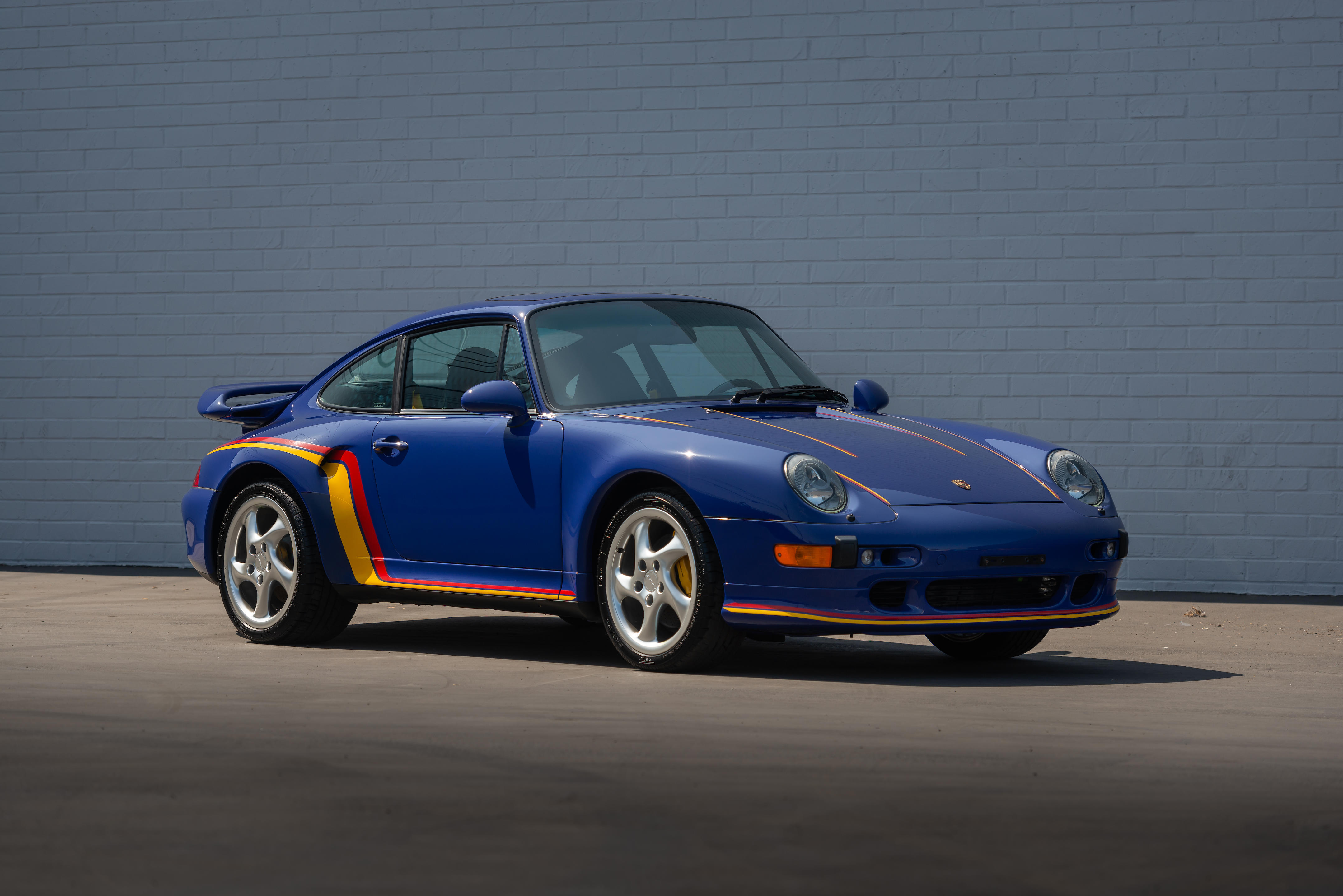
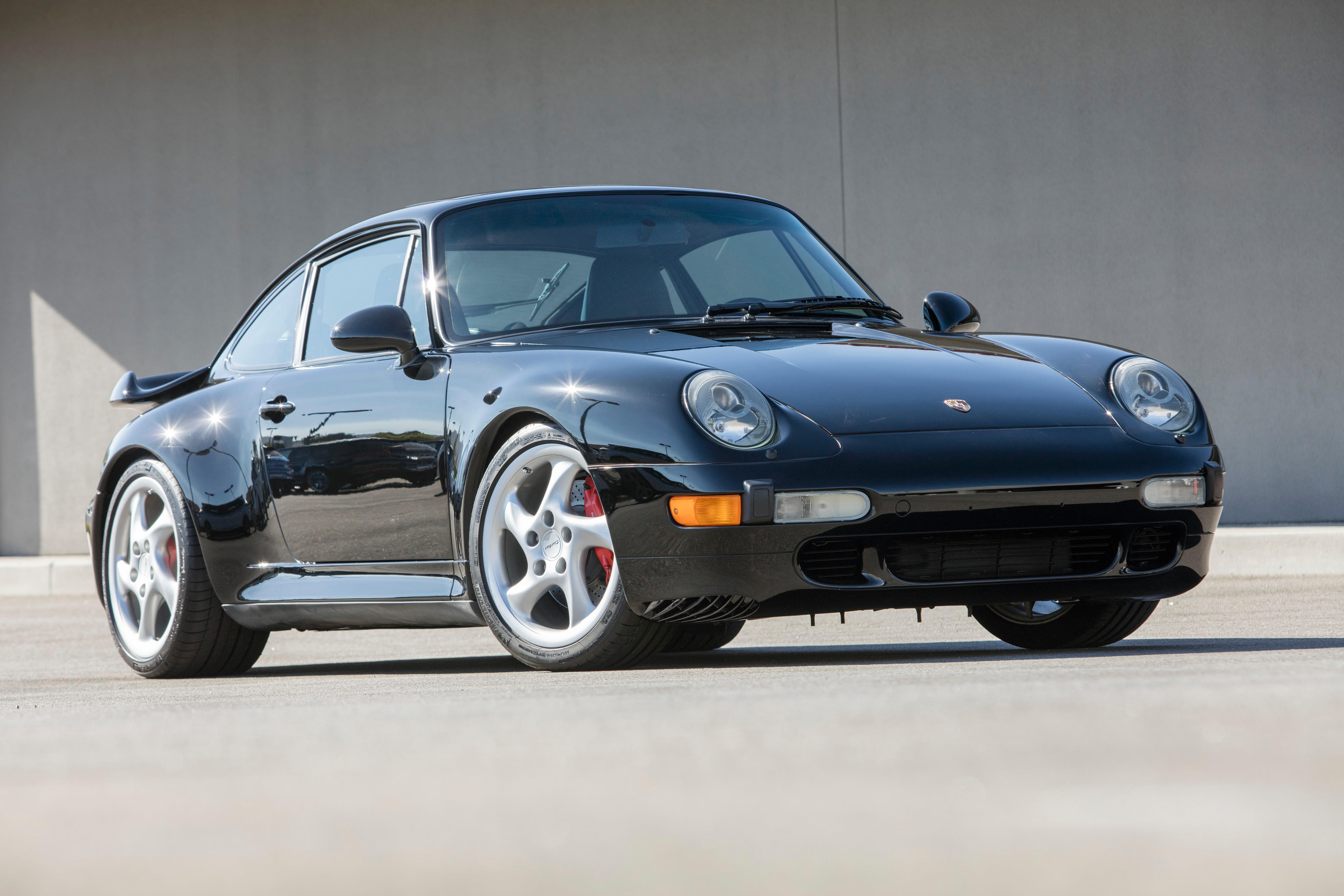


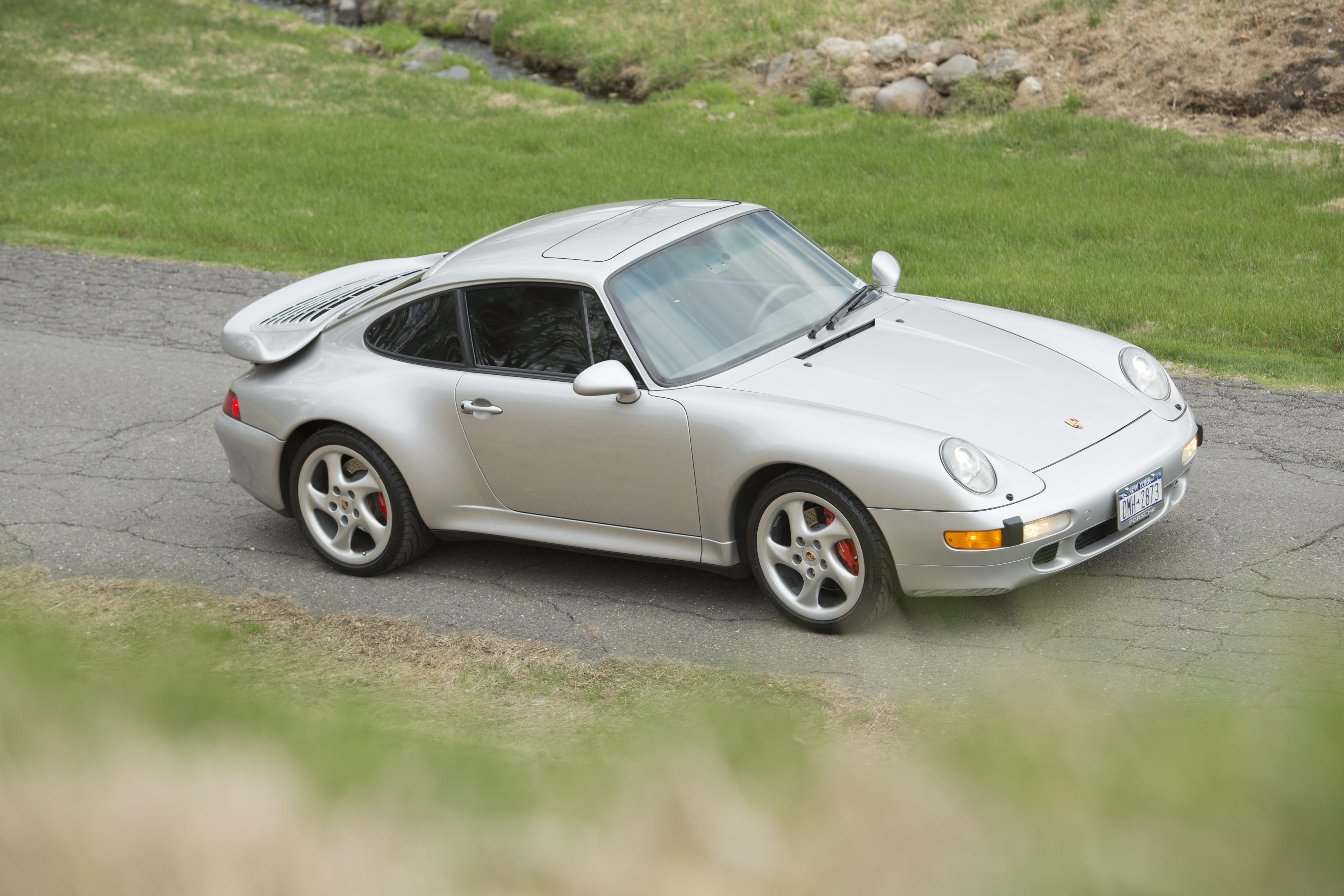






Testen Sie LotSearch und seine Premium-Features 7 Tage - ohne Kosten!
Lassen Sie sich automatisch über neue Objekte in kommenden Auktionen benachrichtigen.
Suchauftrag anlegen